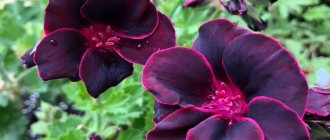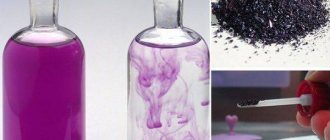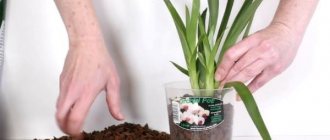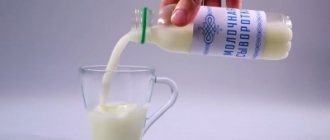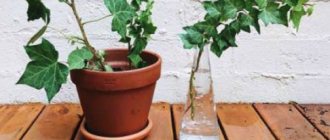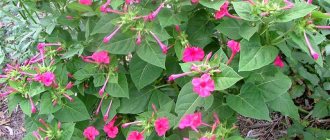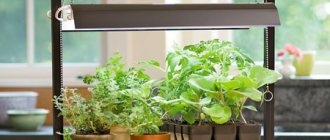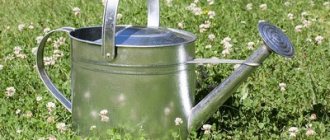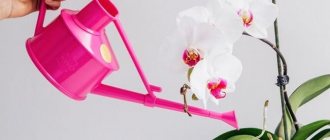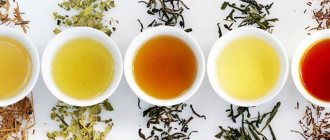In many homes there is at least one jar of honey. This is a healthy treat not only for people. The product has antibacterial and antifungal effects, which is why it is used for rooting plants. Fertilizers are also prepared with it. Below are some incredible ways to use honey in your garden.
Natural honey is a unique product used as a fragrant delicacy and a source of health. It contains over 100 valuable components that are necessary for the human body. Approximately 80% are carbohydrates - fructose, sucrose and glucose. The proportions of these components may differ in different varieties. Honey is also effective for the garden.
Honey fertilizer
To prepare honey fertilizer, 1-2 tbsp is required. l honey, which is added to water (2 liters). Shake everything thoroughly and use it to water the plant. If the product is used for potted plants, then it is poured until water seeps out from the bottom. This sweet fertilizer is used once every 2 weeks.
This honey fertilizer is useful to regularly use for flowering and fruit-bearing annual plants. Its use allows you to obtain aromatic and sweet fruits. But be careful: tasty fertilizer may attract insects. Ants especially love sweet honey.
Real 3 Ways to Use Honey in the Garden
1 Honey as a rooting hormone for plant cuttings
We all know that honey is very good for health. It is a natural antiseptic, which is precisely the reason why honey is used to root cuttings. Just don’t believe garden myths that honey is a rooting hormone, it’s not. Honey can protect the cutting from fungal infection until the cutting has time to form roots. If cuttings become infected before roots form, the cutting may deteriorate to the point that no roots form. When you take cuttings, the cut end is exposed and vulnerable to infection. This is where honey comes in handy. According to the US National Institutes of Health, honey neutralizes many types of bacteria and mold. Apply a little honey to the end of the cutting to protect it from harmful bacteria or mold in the soil. (If you are interested in reading about the results of a study on rooting of complex cuttings in honey, here is the link: https://www.sciencedirect.com/science/article/pii/S0254629913002573)
Coleus cuttings in honey
How to root cuttings in honey
Here is one of the simplest ways to prepare a mixture of honey and water for rooting cuttings (it can be adjusted if necessary):
- 1 tablespoon (15 ml) honey – Pure or raw honey is said to be better than regular store-bought honey (which has been processed/pasteurized, which removes its beneficial properties) and produces the best results.
- 2 cups (0.47 L) hot water.
Mix honey with hot water. Place the solution in an airtight container. Leave in a dark place for two weeks.
How to root cuttings in honey
When you are ready to start using honey to root cuttings, you will need to first prepare the cuttings and soil medium. Your cuttings should be 15cm long and cut at an angle of about 45 degrees. Dip each cutting into the honey mixture and then insert them into your chosen rooting substrate. Honey for cuttings has proven effective using a range of substrates, including garden soil and even rockwool.
In soil media, the easiest way to make a hole for each cutting is with a pencil (or your finger). Also, make sure to keep the soil moist. The same concept applies to soilless media. When rooting in water, place the cutting directly into the water immediately after dipping in honey. The rooting process in honey takes about one to two weeks.
You can find out more tips on how to take cuttings from garden plants in this article >>>
2 Honey as a fertilizer for weakened plants
Place the plant in a bowl or sink to prevent drainage. This applies to potted plants; however, if you water garden plants, we skip this step.
Watering plants with honey water
Step 2
Mix 1 liter of water and 2 tbsp. honey Water the leaves of the plant with honey water, making sure the soil is well soaked. Water the plant once, if it is an ornamental crop, then before flowering. Over time, the leaves will acquire a rich color and become stronger. According to unverified information, watering fruit and berry crops with honey water helps raise the Brix level, which is used as a measure of the sugar content in fruit juice. But I could not find scientific confirmation of this fact. In the garden, control the number of ants, otherwise you will give them a feast.
Fruit fly trap
Fruit flies are small pests that many gardeners struggle with. You can create a trap for them. To do this you will need rotting fruit, honey and apple cider vinegar.
Honey and fruit should be placed in a jar and a little vinegar should be added there. The container is covered with cellophane and wrapped with an elastic band. You need to make a lot of holes in the cellophane with toothpicks. Such a trap should be kept in areas where flies live to lure them.
Let's exterminate pests - heated water
The easiest way, for which you don’t need to buy anything, is to take a hot shower! Heated water (not boiling water under any circumstances) will not only be a way of protecting against pests, but at the same time will serve as a good stimulant. Before performing this procedure, you need to water the plants, and after 1-2 hours have passed, place them in a bath and water with heated water. The temperature of the water must be such that you can hold your hand in it. It takes 1-2 minutes to water the plants; the water will help destroy pests that live in the soil. After such a shower, plants must be left in the bathroom overnight so that the glass from the pot and the plants dry out. This operation can be performed on almost all plants, with the exception of Saintpaulia.
Honey hormone
Plants are often grown in the garden from cuttings. For success in this matter, rooting hormone is used. Instead of a special product, you can use honey. The product improves root growth. Thanks to its antibacterial and antifungal effects, honey eliminates rot and infections from cuttings. This product also provides a safe environment for roots to grow.
Honey (2 tbsp) should be added to boiling water (2 cups), and let the product cool. The cuttings are dipped into water and left there. Rooting occurs after 1-3 weeks.
Is it possible to attract bees to the garden using honey?
In principle, beekeepers practice feeding young bee colonies in the hives with a weak solution of honey or sugar water, but only before preparing for winter or during unfavorable periods, when for some reason the bees are very weakened. In their vocabulary, beekeepers call honey food for bees honey nourishing; it enriches the bee diet with carbohydrates and amino acids. The consistency of the solution depends on the condition of the bees; for the winter, use 4 parts honey to 1 part water. But beekeepers do not recommend using honey water in the summer, weaning bees from eating pollen and pollinating plants in the garden. So there is no need to place saucers with honey water in the garden. But what bees will be happy about in the garden in the summer is the longest period of flowering of various plants in your garden and sources of water during drought.
Honey water for bees
honey trap
Large holes in stems, leaves, fruits, and bulbs are a symptom of slug infestation. With the help of honey, the problem can be eliminated. You just need to install a special trap.
You should make a solution based on honey and yeast; they are dissolved in a small amount of water. The product is placed in a container that is stored on the ground so that slugs can easily get into it. The container must be deep so that pests do not escape. The container needs to be replenished every 2-3 days.
Processing cuttings
To make the roots stronger, you need to place the cut cuttings in honey. And then the procedure is as follows:
Recent Entries
Chainsaw or electric saw - what to choose for the garden? 4 mistakes when growing tomatoes in pots that almost all housewives make Secrets of growing seedlings from the Japanese, who are very sensitive to the soil
- Prepare sterile soil for rooting. You can place it in a plastic cup with a drainage hole.
- Make holes in the ground for the cuttings so as not to injure the thin stem and the nutritious honey protective film. Honey has antifungal properties, so it “seals” the cut without preventing the plant from receiving moisture from the soil.
- Place the glass with the plant in a plastic bag to create a greenhouse effect.
Rooting will take approximately 5-6 weeks. You need to open the package once a day for 2-3 minutes.
What to do with a soapy water solution?
A soap solution is often used to remove midges. Podurs grow in pots due to excessive watering. The difficulty of dealing with them lies in the fact that the insects lay eggs in the ground. Watering with soapy water helps destroy the eggs and thereby remove the annoying midges.
Sometimes soap is used to reduce the acidity of the soil. Most indoor flowers prefer to grow in soil with a neutral pH. Acidity can be measured using litmus paper. If it exceeds the norm, the flower can be watered with a weak solution of laundry soap containing alkali.
Experiments with indoor plants should be approached wisely. In a small volume of soil, a flower can easily be harmed by thoughtless actions. Before watering the soil in a pot with special water or some kind of solution, you need to evaluate the feasibility of such watering and understand whether the plant needs regular irrigation, growth stimulation or protection from pests.
Burenka stimulator
For plants with decorative leaves and variegated ones, plain milk can be used as fertilizing. Mix the solution - dilute 100 ml of milk in 1 liter of clean water, various ferns really like this treatment. Fertilizing with milk water is carried out once every 3 waterings with regular water.
Such a composition can completely replace a root growth stimulator such as heteroauxin. Mixing the working mixture - add 100 mg of yeast to 1 liter of clean water, place the cuttings intended for rooting into this mixture and leave them for 1 day. After this, you need to remove the cuttings from the yeast solution, rinse well with clean water and place them in a container with water or in a greenhouse for rooting.
A little advice - if you are rooting the cuttings in water, it would be a good idea to put some charcoal in it. A yeast solution is also used in the garden; when planting plants in the spring, they are watered with this solution for better survival.
- Posted by fenix
Rate this article:
- 5
- 4
- 3
- 2
- 1
(4 votes, average: 4.5 out of 5)
Share with your friends!
Boric acid = blooming garden
As a stimulator for the formation of flowers and ovaries, a solution of boric acid is used, this composition can successfully replace “Ovary” in the garden, boric acid is also used to treat cucumbers, tomatoes, and during the formation of cabbage heads, it can be used to treat any fruit trees and bushes. This solution is used to treat any plants; the procedure is carried out several times during the season - during the formation of buds, after flowering, and again 2 weeks after flowering, so that the ovary does not fall off.
Is it possible to water flowers with filtered water?
There is still debate about whether it is possible to water flowers with filtered water. Some consider it dead, completely devoid of useful substances. Others claim that after passing through the filter, the water becomes cleaner and softer, and its acidity is normalized.
There is only one way out - to test this method of watering in practice. Let the flowers themselves vote for or against filtered water with their appearance. Most gardeners on forums consider this option acceptable for their plants. The lack of mineral elements can always be compensated for by feeding.
Is it possible to water flowers with water from an aquarium?
It has been noticed that when watered with aquarium water, indoor plants come to life and begin to actively grow and bloom. The magical effect is easy to explain. Fish, with their secretions, enrich the water with organic matter and at the same time make it soft.
With this type of watering, mineral fertilizers can be applied less frequently or not at all. You just need to take into account that at the time of taking water from the aquarium, there should be no traces of drugs for treating underwater inhabitants and other chemicals in it.
Is it possible to water flowers with water from an air conditioner?
The condensate formed during operation of the air conditioner is distilled water. The distillate is completely devoid of mineral salts, which is even good for some flowers. Such a liquid would be useful for watering epiphytes (the same orchids) and predator plants.
However, in this case, the aquatic environment is filled with fine dust and all kinds of bacteria that have entered it from the air. Purely theoretically, water from expensive air conditioners with good filters may be of higher quality, but the validity of this version can only be confirmed in a laboratory.
For the ants
Ants are present in many gardens. They reproduce very quickly, which is very harmful to most plants. The main toxic component that helps get rid of pests is borax. You need to take ½ tsp. borax, and then mix with honey and peanut butter (2 tbsp each). The bait must be placed in a suitable place.
This is an unusual way to use honey in the garden. It turns out that this valuable product can also be useful for plants. Therefore, gardeners should take these tips into account.
How to determine seed quality
Most seeds can remain viable longer than stated on the package, provided, of course, that the correct storage conditions are met. Deadlines may be missed for various reasons, the main of which are: Low quality; Failure to comply with germination temperature conditions.
Sowing balsam seeds for seedlings
Sowing strawberry seeds for seedlings
Planting seedlings in open ground
Germination is easy to determine by germination in small containers on a damp cloth or a layer of dense hemp, on which a certain number of seeds are placed. The fabric is kept moist, creating greenhouse conditions, taking into account the ratio of sprouted units to their total number.
Holy water for irrigation
Believers may want to water flowers with holy water, blessed at Epiphany, for example, if the plants are withering. The Church does not prohibit such use of the shrine. There will definitely be no harm from this.
Opinions differ about the benefits of such an event. You could say it's a matter of faith. Often in this way they use up the holy water left over from last year, pouring it down the drain is considered a sin.
Feeding seedlings with honey
A solution of honey for stimulation is prepared at the rate of 1-2 spoons per bucket of water. There is no need to increase the dose. In the specified solution, grape stems and cuttings of fruit crops are soaked for up to two days, planting material for chrysanthemums, carnations, and tomatoes is kept for 10-12 hours, cucumbers for 8 hours. After this procedure, crops grow faster, their root system develops better, survival rate increases, and viability increases.
Whatever you decide to soak the seeds in before planting, do not forget the main rule of soaking: first, soak the seeds for a couple of hours in plain water (preferably in melted water). When the seeds swell and absorb the main amount of water, they are placed in a solution with a stimulant.
Otherwise, when swelling, the seeds may absorb too much of the dose and simply burn. After treatment in any of the nutrient solutions, the seeds need to be dried, and they are ready for sowing. We wish you success and rich harvests!
